Nepal is a collection of various cultures and has a large number of languages. Every language has its own value and ritual meaning. Here are some most relevant festivals Nepalese follow.
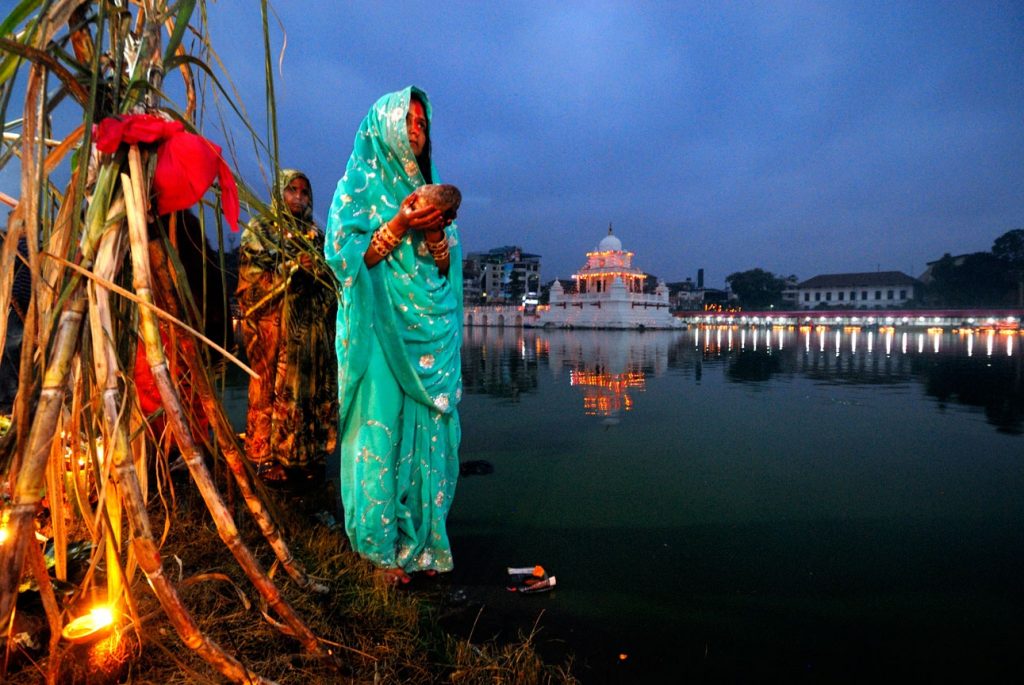
Chhath Parva
Originally started by natives of Mithila, the Chhath Parva can now be seen celebrated around the country. Decorations of water sources, ponds, rivers and lakes along with offerings of fruits and other delicacies to the god Sun stands out as a unique cultural trademark. The festival lies in October/November and is celebrated for four days.
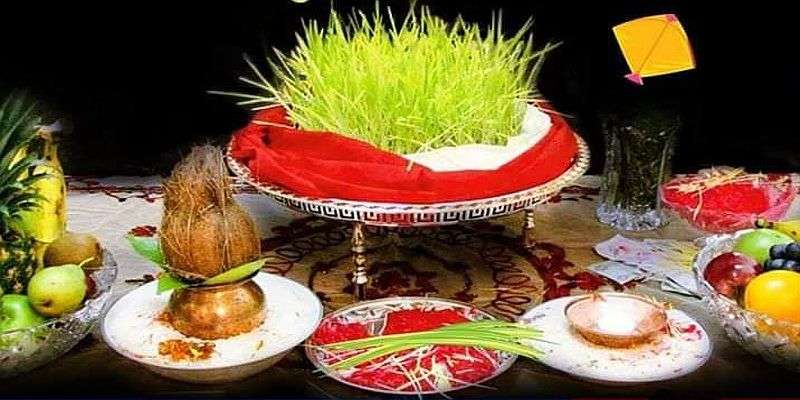
Dashain
The longest and most auspicious festival for people in Nepal – Dashain (September/October) is a Hindu festival with differentiated rituals followed in different parts of the country. From Ghatasthapana (the planting of barley) to Fulpati, Asthami, Navami and Dashami, ritualistic celebrations keep the folks busy. High swings made of bamboo and local rope is set up in plenty in the open, a must-do ritual; you might want to give a try. The festival is also accredited with rituals of tika, jamara and blessings among kins from the elder members. Worshipping of gods and goddesses in temples is a common sight, but what may intrigue and perhaps make some loathe Dashain is the amount of animal sacrifices performed to please the gods.
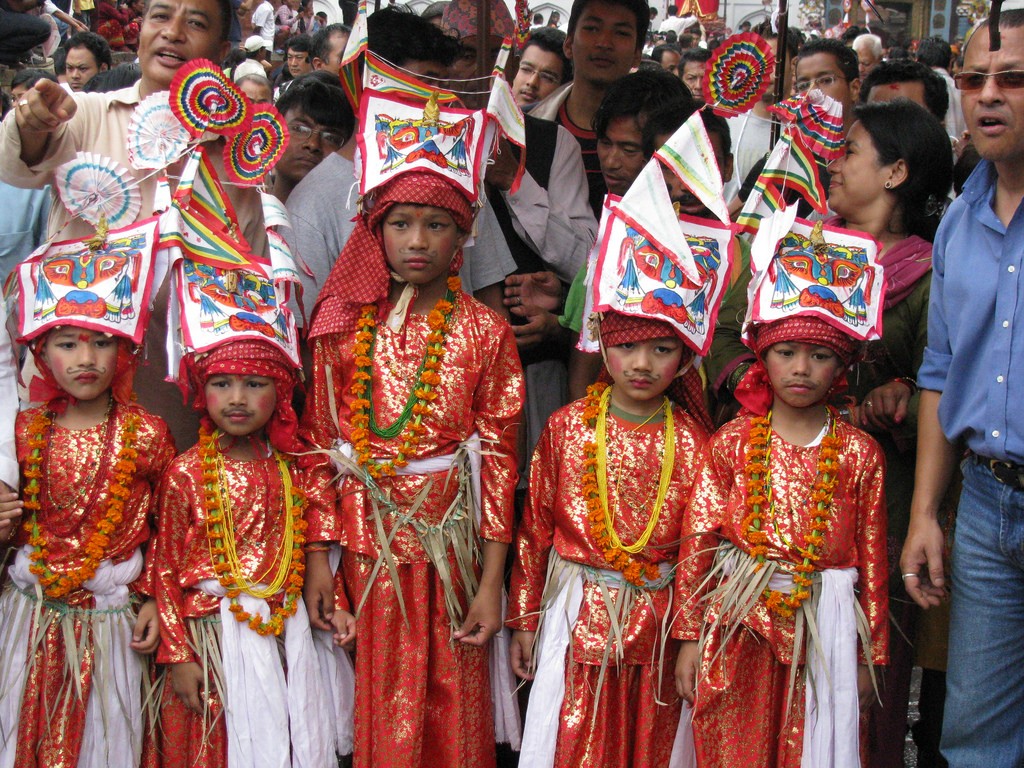
Gai Jatra
The festival of Gai Jatra was started in the Malla period by Pratap Malla who had lost his son and wanted to provide consolation to his grieving wife. Gai Jatra or Sa Paru is celebrated mainly in the Kathmandu Valley by Newars with processions in memory of losses of family members. A cow, or a child dressed like one is usually paraded around the streets as it is believed that the holy animal helps the deceased in the journey after life. However, the traditions of celebration varies and the uniqueness of stick dancing in Bhaktapur, matayaa in Patan and dancing deities in Kirtipur are noteworthy. In the evening, street shows depicting acts of social injustices and evils are portrayed through small plays, the participants often mocking their targeted issue in the funniest, yet harshest possible ways.

Holi
Holi, the festival of colours and sharing love is celebrated for two days in late February/March. People put colours on each other and spray water often using water guns (pichkari) and balloons filled with water. The celebration begins after gathering at a common place or going around in small groups to kith and kin and putting colours on each other. The holi in hilly region is celebrated one day prior to that in terai. In Kathmandu, holi is marked with the erection of a long bamboo stick (lingo) covered with colourful pieces of cloth (chir) at Basantapur Durbar Square. In the evening of holi, the lingo is brought down and the chir is burnt to mark its end. Holi also marks the end of winter and the arrival of spring.
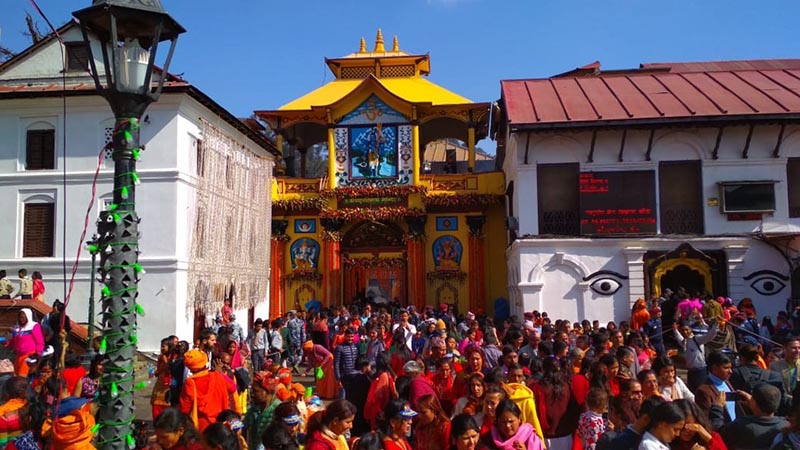
MAHA SHIVARATRI
Maha Shivaratri is one of the major festivals of Nepal and literally means “Night of the Shiva”. It is celebrated on the 14th day of the dark fortnight of the Māgha month, as per the Hindu lunar calendar.
It is believed that on this day, the stars in the Northern Hemisphere are at most optimum positions to help raise a person’s spiritual energy.It is also believed that the Shiva principle is most active on this day of the year.
Maha Shivaratri is celebrated marking the convergence of Shiva and Shakti. Maha Shivaratri also celebrates the night when Lord Shiva performed the “Tandav”, the cosmic dance.
Hundreds of thousands of devotees visit Pashupatinath Temple in Kathmandu, one of the holiest shrines of the Hindus. Pashupatinath is considered the Guardian and Protector of the Kathmandu Valley and Nepal.
Devotees chant “Om Namah Shivay” and “Mahamritunjaya” all night praying for light over darkness. Tourists are seen enjoying the ambiance with curiosity, as colorful and naked sadhus are seen meditating, posing for photographs and interacting with disciples.
Special attendance camps are set in the courtyards of the temples. Children are seen collecting donations from passersby on this day preparing for holy meal and bonfire in celebration of the special night.
Arrangements for Maha Shivaratri at Pashupatinath Temple
Maha Shivaratri is known as one of the most celebrated religious festivals for Hindus. Every year Hindus from all over the world are seen thronging many Shiva temples during this festival. Pashupatinath Temple is the place with the biggest crowd on this day.
This year, on the occasion of Maha Shivaratri, the Pashupati Area Development Trust (PADT) is expecting a crowd of 1.3 million people from across the world. For the successful celebration of the festival, the management unit in Pashupatinath have started cleaning the area. Also, this year more importance has been given for figuring out an easier way to manage crowd so that devotees can carry out their Puja and Darshan faster and more conveniently.
Spring is one of the best times to visit Nepal, and Indian tourists enjoy visiting during the most auspicious occasion of Maha Shivaratri. Special provisions are made to ease Darshan for Indian pilgrims at Pashupatinath during Maha Shivaratri, which falls on Feb 13 this year, according to officials at the Pashupati Area Development Trust (PADT). The PADT will also make available Pashupati Darshan passes at easy outlets near Pashupati area to facilitate pilgrims from India.
Apart from Puja and Darshan other attractions for visitors to the temple vicinity at the time will be the colorful crowd including gorgeous Sadhu Babas from different parts of Nepal and India. People come to Pashupatinath to observe and see the different kinds of Sadhu Babas and their activities; some Sadhus are covered is ashes while some prefer to be completely naked.
According to Pashupati Area Development Trust (PADT) Chairman Mr. Govinda Tandan , “A huge crowd is expected and we are working to manage a fine parking facility and a good place for devotees to sit. Also, as many devotees show eagerness to distribute food to the people present there, we are trying to manage a proper place for the devotees to enjoy their meal.”
As Maha Shivaratri is mainly related with the night, the devotees stay up all night and pray to Lord Shiva. The four Prahars of Puja is carried out all night long, the devotees usually stay in tents along the Gaushala road.
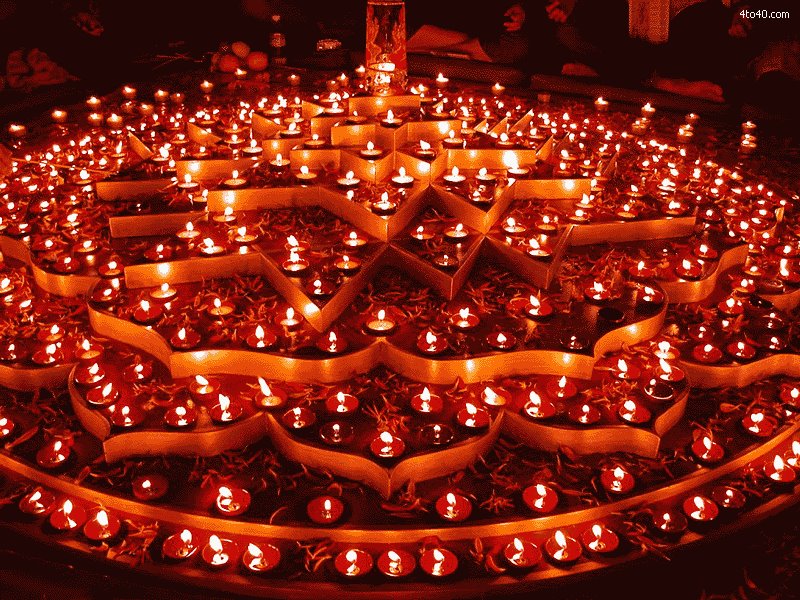
Tihar (Dipawoli)
Tihar or Deepawali lies just after the festival of Dashain (October/November). This festival is a five day celebration which comprises Kag Tihar (Crow worship), Kukur Tihar (Dog worship), Gai Tihar (Cow worship), Gobardhan Puja or Mha Puja (Oxen or self-worship) and finally Bhai Tika (worship of brothers by sisters). During the festival, garlands, colourful decorations and fancy lights can be seen embellishing streets, shopping centres, small shops and houses. Youngsters going from door to door singing and dancing to folk tunes can be seen as dyeusi and bhaili tradition in all parts of the country. The making of mandala with colors is an artistic display that also adds to the festive ambience. This is a festival you wouldn’t want to miss due to the enthusiasm in celebration and unique cultural practices.








